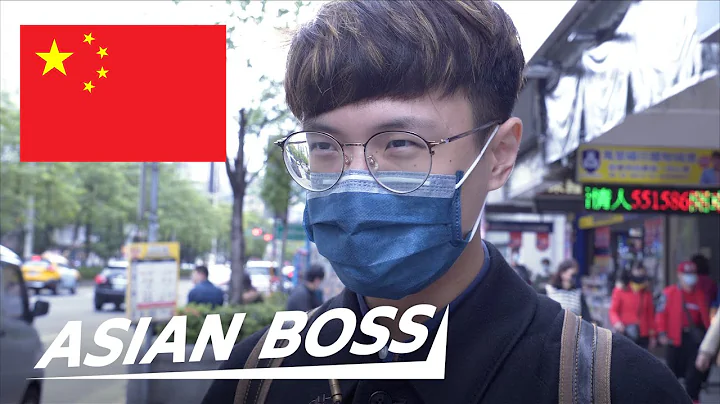Before telling today’s story, let me ask you a question: Is the “clothed beast” a derogatory term or a commendatory term? The question
is not difficult to answer: of course it is a derogatory term, which describes a person who looks human but is actually a beast. But the word was actually commendatory at first, what does it mean? Refers to the official. What is
? Because ancient officials’ clothes were printed with birds and beasts, the Ming Dynasty stipulated that civilian officials should wear embroidered birds and military officials should wear painted beasts. So at the beginning, saying that other people’s clothing and beasts actually wished others will be prosperous and can be high officials in the future.
Of course, this "beast" cannot be printed randomly. The printing is exquisite. For example, the civil servants embroider the cranes and the military officials embroider the lions, and then embroider different animals according to different levels. In addition to animals, some places in ancient times also Some "special beasts" are used to show certain intentions. For example, the door of the prison is made of 犴犴. Why? Because it is said that it emphasizes righteousness, good lawsuits, can distinguish right from wrong, and speaks righteously, it has become a synonym for prison.
But in modern times, we neither engage in feudal hierarchies, nor do we engage in feudal superstitions. Therefore, the current official administrative departments rarely engage in such things, but there are very few exceptions. For example, there is such a "sacred beast" from feudalism. The era has continued to the present and is being used by the public security, procuratorate and legal departments, and it is used by both sides of the strait.
What kind of animal is this? This kind of animal is called xiè zhì, what does it symbolize? Symbolizing the law, the Book of the Later Han Dynasty-The Second Book of Yufu Records : ‘The Crown of Law...or the Hachi Crown. The Haechi god sheep, can not be straight, the king of Chu tasted it, so he thought it was crowned. So Haechi became a symbol of Chinese law.

In the Qing Dynasty, the princes used Hachi as a supplementary service (a kind of official uniform), and the duty of the princes was to investigate and administer officials. The Hachi
on

Yushibuzi and this tradition has been passed down. Nowadays, there are still Hachi patterns on the hammers of judges in mainland China. Many statues at the gates of courts are not lions but Hachis, and they are located in Beijing. The logo of the Law Press is Haechi.

In Taiwan, the Hachi is used by the military police. The right arm of the military uniforms in Taiwan will be sewn with the "gendarmen" armband on the right arm. Because the military police is a law-enforcement unit, it is necessary to distinguish between justice and justice. "Haezhi".
is used not only in China, but also in South Korea. The capital of South Korea, Seoul, uses Hachi as the city's mascot (announced in May 2008). Because in the Joseon Dynasty, Haechi was a beast that symbolized the palace and the suppression of evils and disasters. This is not the same as the expectations of the ancient Korean people and the Chinese. It should be that some changes occurred when this culture passed on.

The cartoon Haechi mascot on the streets of Seoul, South Korea. What kind of beast is
"Haechi"? Let's talk about its appearance first. It is said that this Haechi looks like a sheep (or like a deer), with a single horn in the middle of its head, and a tail like a snail and sheep's hooves. What are its characteristics? It lives by the water and has a loyal temperament. By the way, doesn't it have horns? This horn is for this function: this Hachi likes to see people fighting and fighting, and is very fair. If he sees two people fighting, he will hit the wrong side with the horn; when he sees two people quarreling, he will bite the wrongdoer (" Gender is straight. Those who see people fighting will not touch them. People who hear people argue, but those who are not righteous."-Han Dynasty Yang Fu "Foreign Objects").
sounds a bit cute, but it is precisely because of this upright characteristic and innate instinct to distinguish right from wrong, fairness or not, it is also considered to be a symbol of "justice", so the law enforcement began in ancient times. The department uses it as a symbol.
How did this animal come from? Of course, it cannot be a real animal but a legendary beast, but it is also unclear how it came from. Hachi is not one of the "Nine Sons of Dragon". It seems to be related to the law as soon as it comes out. , In the bronze inscriptions, the word "Fa" is written as "灋", and the "Shuowen Jiezi" is interpreted as "灋, the solution to the beast, like a cow, a horn, the ancients litigated, the one who made the touch not straight", This "solution" was later written as "獬豸".

Forbidden City Haechi statue
is not unique, not only in China, in ancient Europe, unicorns were also considered pureThe symbol of the ancient European people believed that the horn of a unicorn could suppress injustice. This situation occurred in both the ancient East and the West. In fact, it shows a problem: the ancient people were also very eager for justice, and the "horn" was considered a symbol of strength, so why use the "horn"? Art comes from life. Perhaps the ancient people looked at the horns of animals such as rhinos as powerful, so they worshipped "horns."
"Haechi" is not an animal with a certain legend first, and then people formulate certain stories for it (such as phoenix, unicorn, etc.); but first there is law, and people have expectations for fairness and justice. Then I imagined a kind of beast that symbolizes "fairness and justice". "Hachi" and "justice" are in one body. "Hachi" is not superstition and evil god, but it is born to represent good expectations.
is precisely because of this. Even in modern times, "Hachi" has not been regarded as a decadent culture and eliminated from history. "Haechi culture" is still spread in East Asia. Of course, we now know that fairness and justice are not It can be achieved by some imaginary beasts. The image of "Hachi" is a relic of the god-judgment in the age of ignorance, but what? This also puts a good expectation on fairness and justice, so in modern times, Hachi is still a symbol of traditional Chinese legal culture.
Author: Yun-Fan





















